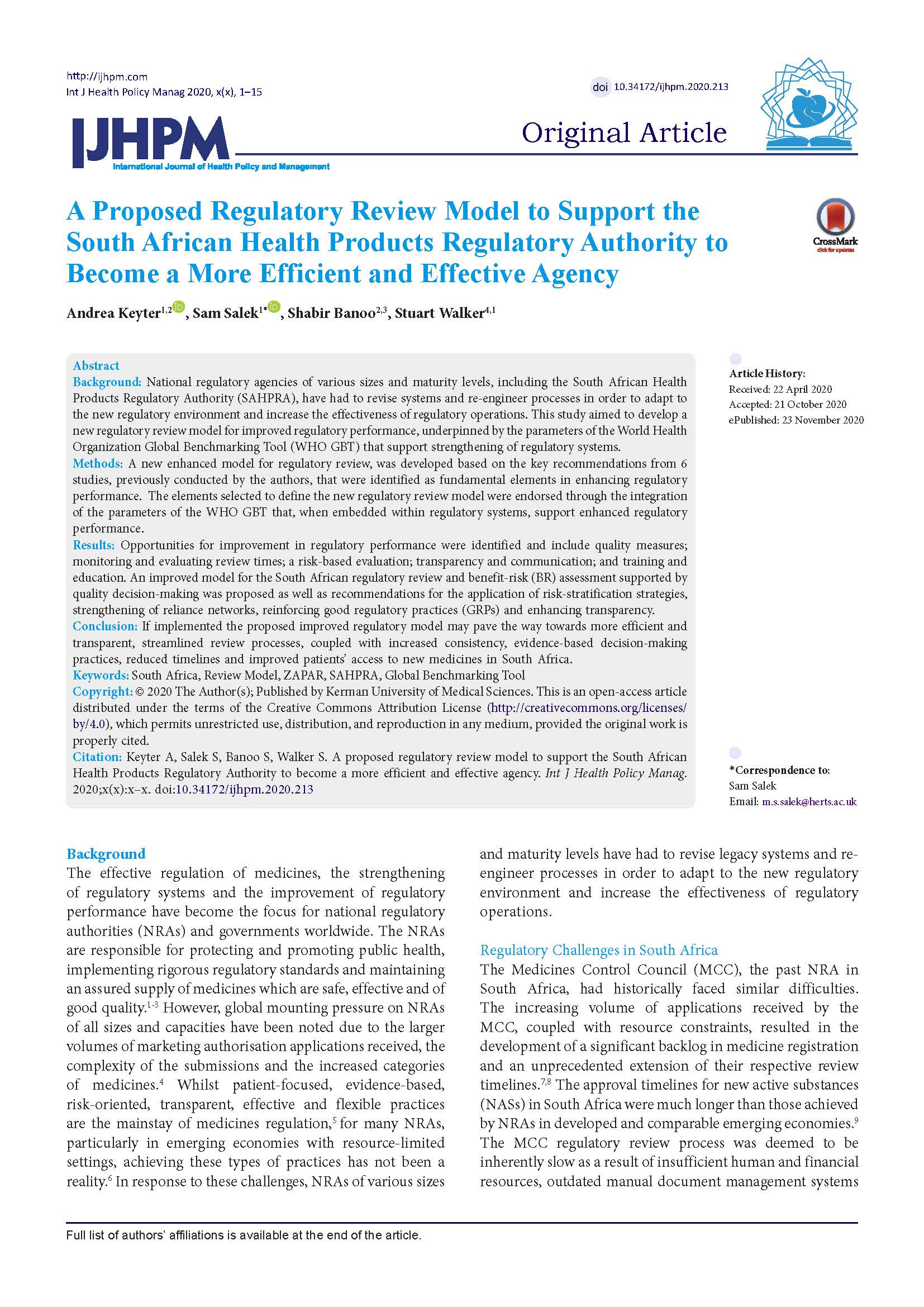Background: National regulatory agencies of various sizes and maturity levels, including the South African Health Products Regulatory Authority (SAHPRA), have had to revise systems and re-engineer processes in order to adapt to the new regulatory environment and increase the effectiveness of regulatory operations. This study aimed to develop a new regulatory review model for improved regulatory performance, underpinned by the parameters of the World Health Organization Global Benchmarking Tool (WHO GBT) that support strengthening of regulatory systems.
Methods: A new enhanced model for regulatory review, was developed based on the key recommendations from 6 studies, previously conducted by the authors, that were identified as fundamental elements in enhancing regulatory performance. The elements selected to define the new regulatory review model were endorsed through the integration of the parameters of the WHO GBT that, when embedded within regulatory systems, support enhanced regulatory performance.
Results: Opportunities for improvement in regulatory performance were identified and include quality measures; monitoring and evaluating review times; a risk-based evaluation; transparency and communication; and training and education. An improved model for the South African regulatory review and benefit-risk (BR) assessment supported by quality decision-making was proposed as well as recommendations for the application of risk-stratification strategies, strengthening of reliance networks, reinforcing good regulatory practices (GRPs) and enhancing transparency.
Conclusion: If implemented the proposed improved regulatory model may pave the way towards more efficient and transparent, streamlined review processes, coupled with increased consistency, evidence-based decision-making practices, reduced timelines and improved patients’ access to new medicines in South Africa.
Keyter A, Salek S, Banoo S, Walker S. A proposed regulatory review model to support the South African Health Products Regulatory Authority to become a more efficient and effective agency. Int J Health Policy Manag. 2020;x(x):x–x. doi:10.34172/ijhpm.2020.213

